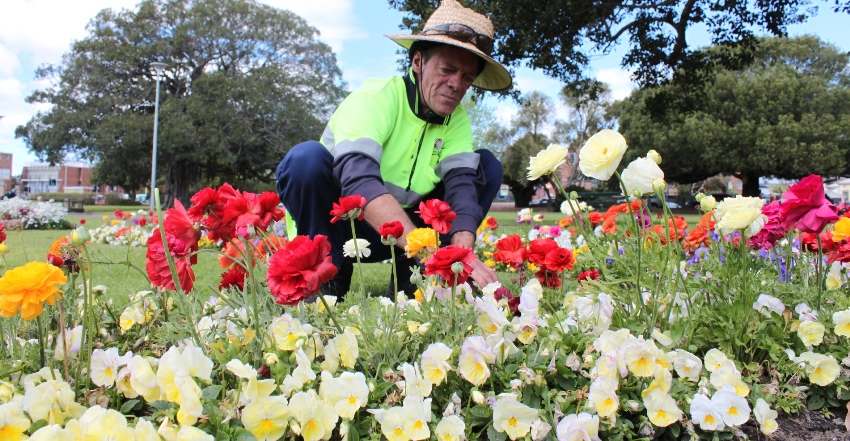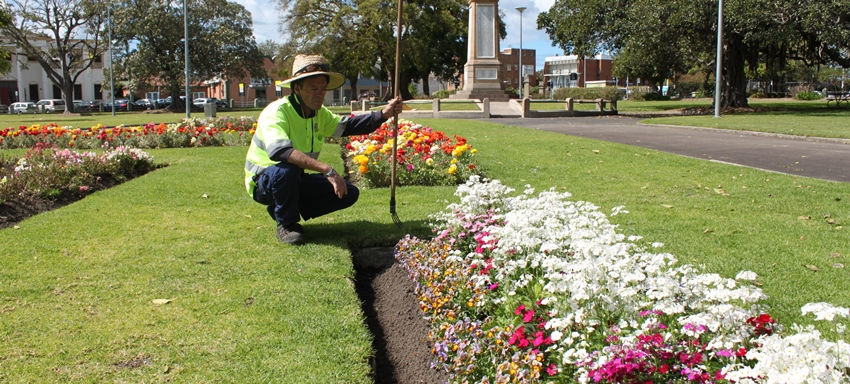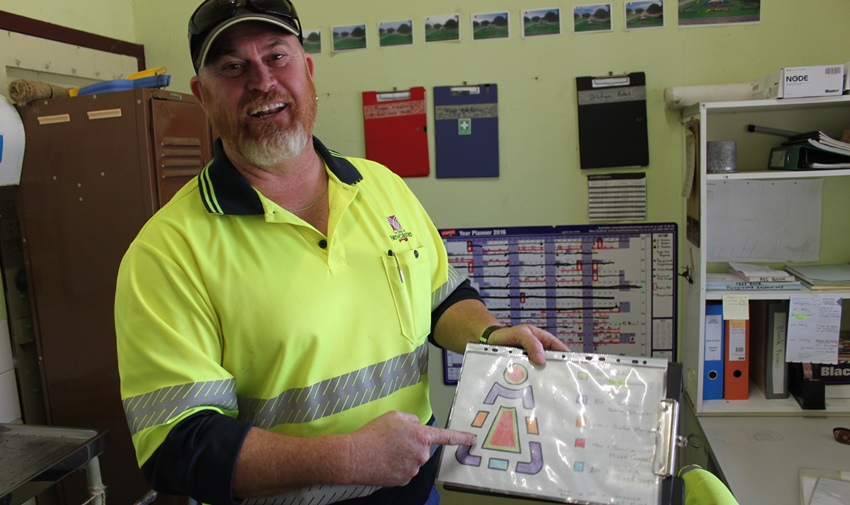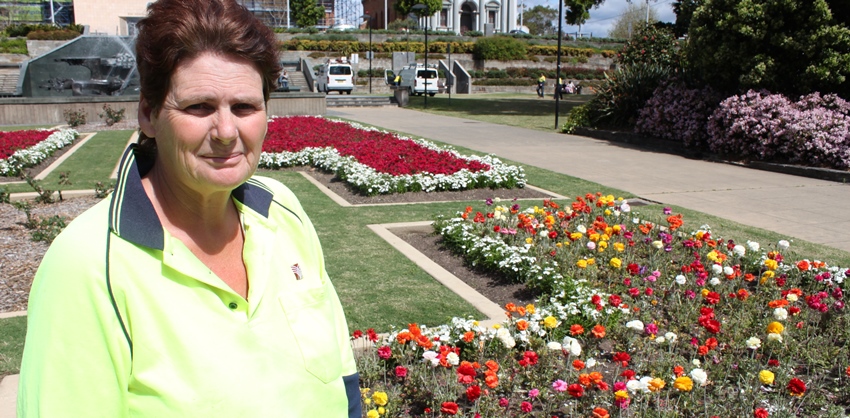
Ton of experience behind city's floral displays
23 Nov 2016
The radiant flower displays in Newcastle's parks and reserves are as much a miracle of nature as they are of nurture.
Before the flower beds planted in Gregson Park in May are replaced over the next few weeks, a trio of green thumbs boasting 102 years' experience with council rejuvenate the soil in preparation for the second annual planting.
Mark Pepperall, Patrick Lowe and Stephen "Wally" Campbell will plant around 3,500 individual seedlings after applying their encyclopaedic botanical knowledge and inexhaustable elbow grease to the soil.
 Green thumbs: Patrick, Mark and Stephen, who together boast 102 years of experience
Green thumbs: Patrick, Mark and Stephen, who together boast 102 years of experience
"A lot of preparation is done to the beds by the Central Team of gardeners before planting," Parks Maintenance Coordinator Mark Pepperall (middle above), the relative rookie of the group with only 32 years' service at council, said.
"We use around 10 bags of organic fertiliser and a layer of lime and go over it with a rotary hoe around three days before to let it settle and take some sting out of the fertiliser."

Campbell (above), the veteran of the group with 37 years, says checking the soil's PH levels regularly is important to make sure conditions aren't too acidic.
"Otherwise the leaves might be a bit yellow or flowers might not be fully bloomed," he says. "If you have more nitrogen, you get more leaf."
When their time-tested methods have the soil "just right", and the garden edges have been spaded into a slope to allow water from heavy downfalls to run off the beds, the Gregson Park trio plants a variety of flowers, including marigolds, petunias and salvia.
 Stephen Campbell checking the bed's spaded edges.
Stephen Campbell checking the bed's spaded edges.
"We like to use string lines to make them straight like little rows of soldiers," Lowe says, after 33 years with NCC.
"Once in the ground, we will fertilise them with different products and aerate the soil, nipping weeds in the bud as we go. And we keep the edges spaded up to ensure the beds aren't too damp."
Preventative sprays are used sparingly and the plants are irrigated as required to ensure root systems chase water deep into the soil.
This allows them to reach full bloom around six to eight weeks after planting.
Planning and design
All this toil is preceded by a meticulous planning and design process.
"Before planning, we have to come up with the next design," says Lowe, whose favourite, a 2007 rocket to the moon inspiration (pictured), enjoys pride of place in the men's "humpy".
"We do a visual first (pictured) and work out the design for the beds, changing it up for each planting. We could use four or five different species or breeds and then we work out the numbers."
 Patrick Lowe with one of his favourite designs, a rocket ship that adorned Gregson park back in 2007.
Patrick Lowe with one of his favourite designs, a rocket ship that adorned Gregson park back in 2007.
The sums are done well advance of plantings before the team gets quotes from different nurseries for tens of thousands of individual seedlings in thousands of punnets.
During the eight to 12 weeks the seedlings take to mature, a supervisor will take an apprentice to see them and explain the whole process to ensure the knowledge is passed down.
Similar processes are followed by other NCC staff at King Edward Park, Civic Park, Christie Place, Lambton Park, Rowland Park at The Junction and in other smaller beds.
 Field supervisor Vicki Howard in Civic Park
Field supervisor Vicki Howard in Civic Park
The numbers for November:
All of Newcastle: 32,000 individual seedlings in 4,000 separate punnets
King Edward Park: 8,300 seedlings in 2,075 punnets
Gregson Park: 3,450 seedlings in 430 punnets
Civic Park: 14,000 seedlings in 175 punnets
Christie Place: 3,750 seedlings in 468 punnets













